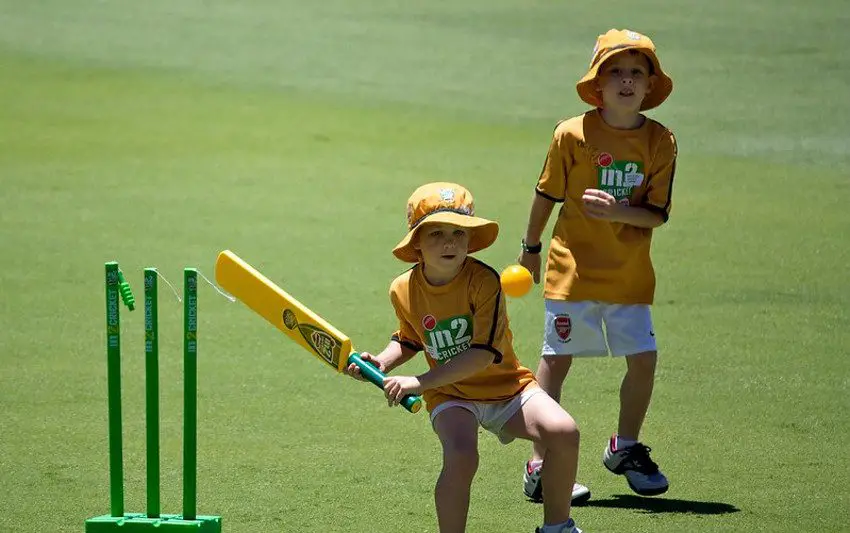Table of Contents
Cricket has always been a sport of skill and timing, where the smallest tactical decision can completely shift the momentum of a match. Bettors who analyze cricket through a strategic lens gain an advantage over those who rely on instinct or emotion. The hidden layer of strategy within the game becomes a blueprint for smarter decisions, more accurate odds evaluation, and improved risk management.
Cricket strategies influence multiple outcomes that bettors observe on scoreboards and betting platforms. A bettor who examines innings pacing, bowling rotations, and pitch exploitation gains deeper insight into match narratives.
The complexity of modern wagering makes it essential to understand what takes place on the field before placing real money. This is especially true when exploring options such as cricket betting with Bitcoin on Coinplay, where odds change rapidly due to instant digital transactions. Therefore, the gap between casual bettors and analytical bettors is often defined through attention to strategic details rather than team popularity or reputation.
Coaches, captains, and analysts prepare extremely detailed game plans based on statistics, weather changes, pitch history, and opponent tendencies. These plans are visible through bowling variations, field placements, and batting approach adjustments. Each element affects live odds and pre-match projections. Bettors who recognize strategic triggers during the match can react earlier, especially in live markets, where timing becomes crucial.

The Role of Pitch and Weather
Pitch and weather assessments shape the captain’s tactical approach. A dry, cracking surface favors spin in later overs, increasing wicket probability and lowering expected run rates. A green pitch benefits seamers and encourages captains to bowl first. Each scenario influences top batter predictions and partnership bets.
Weather alters ball movement as humidity increases swing, while overcast skies add unpredictability to the first innings. Bettors who track meteorological data gain realistic expectations for scoring rates and bowler impact. These conditions create measurable betting angles that correlate directly with strategy.
Batting Strategies and Their Influence
Teams select batting strategies according to match format, required run rate, and fielding restrictions. A power-hitting approach during Powerplay overs raises run potential but also risk, influencing wicket-related bets. A risk-controlled rotation strategy in the middle overs changes probability models for totals, milestones, and partnerships.
Key batting strategy factors that affect betting results:
- Powerplay aggressiveness and boundary frequency.
- Strike rotation approach during spin overs.
- Wicket protection priority in Test formats.
- Death-overs acceleration plans.
- Match-up exploitation against specific bowlers.
Each component alters outcome potential and shifts market odds in real time.
Bowling Strategies and Betting Impact
Bowling changes are rarely random. Captains rotate bowling units when run pressure is needed or when match-ups favor a skilled bowler against a specific batter. Seamers use swing early when the ball is new, while spinners are introduced once the pitch wears.
Bettors benefit when they evaluate:
- Usage timing of strike bowlers.
- Variations in line and length.
- Short-burst strategies.
- Reverse swing preparation in long formats.
Strategic bowling phases are closely tied to wicket markets, economy-rate bets, and live-over totals.
Field Placements and Tactical Pressure

Often overlooked by bettors, the field setting strategy reveals the captain’s intention. An attacking field with multiple catchers signals wicket-hunting, which raises the probability for dismissals and lowers the scoring pace. A defensive field signals run-limitation tactics, which influences totals and boundary markets.
The following factors directly influence field placements:
- Run accumulation speed.
- Batter shot selection.
- Risk level and wicket likelihood.
- Momentum and psychological pressure.
Strategic fielding reactions and pattern recognition help bettors forecast mid-over swings before odds adjust.
Format Variations
Cricket formats require different tactical logic. Test cricket prioritizes patience, defensive fields, and attrition. ODI cricket balances accumulation with selective aggression. T20 cricket demands immediate acceleration and innovative bowling variations. Bettors cannot treat all formats as identical because the probability curve changes with overs available.
Match Situations and Tactical Adjustments
Captains modify tactics depending on scoreboard pressure. Successful bettors focus on situational triggers such as required run rate inflation, early partnerships, or unexpected wickets.
Common scenarios that change the strategy and influence bets:
- High required run rate triggers high-risk shots.
- Early wickets force defensive rebuilding.
- Long partnerships shift momentum.
- Dew conditions affect second-innings bowling plans.
Situational awareness helps bettors predict swings rather than chase them.
The Psychological Dimension
Cricket strategy includes mental pressure as a fundamental tool. Captains and coaches examine behavioral patterns, emotional responses, and individual weaknesses before designing match plans. A batter with a recent string of low scores faces increased scrutiny, and bowlers use this vulnerability to apply targeted pressure through hostile lines, tight fields, or repetitive ball trajectories that cause hesitation.
Teams deliberately isolate weaker batters through field placements that remove comfortable scoring zones. When gaps disappear, risk tolerance drops, and decision-making becomes reactive rather than proactive.
Bowlers then shift from containment to exploitation, aiming to trigger impulsive strokes. This approach increases the probability of dismissals and influences betting markets linked to individual performance, partnership potential or innings duration.
Psychological pressure intensifies during momentum swings. A single dropped catch, misfield, or no-ball can alter body language and confidence levels. Bettors who recognize these phases gain clarity on dismissal likelihood, run-rate direction, and live market volatility.
From Guesswork to Calculation
Cricket strategy remains the most undervalued success factor in wagering analysis. Bettors who track pitch indicators, tactical shifts and match-ups gain a measurable edge over those who rely on emotion or team loyalty. Careful observation, tracking data, and noticing patterns turn betting into a structured process with much less guesswork.


